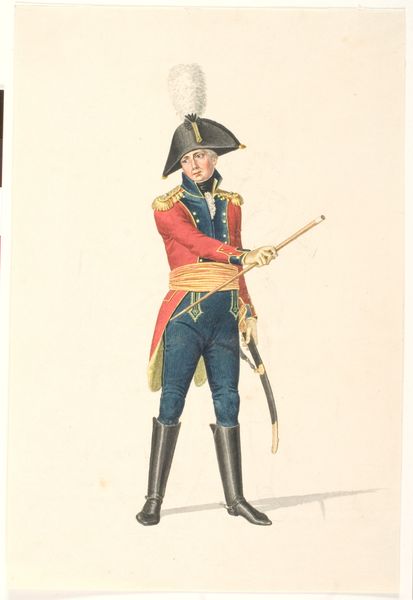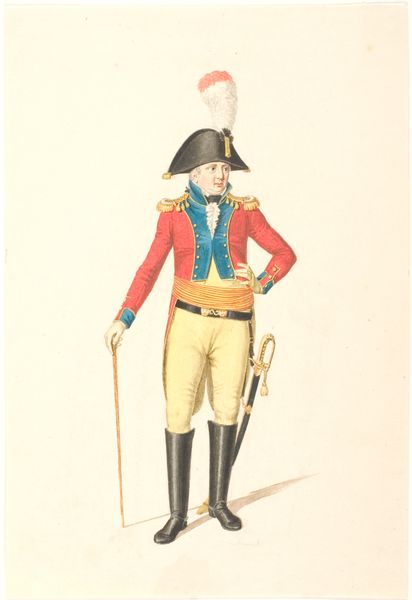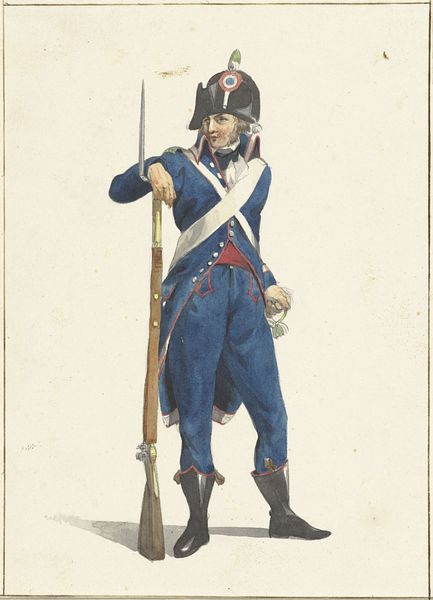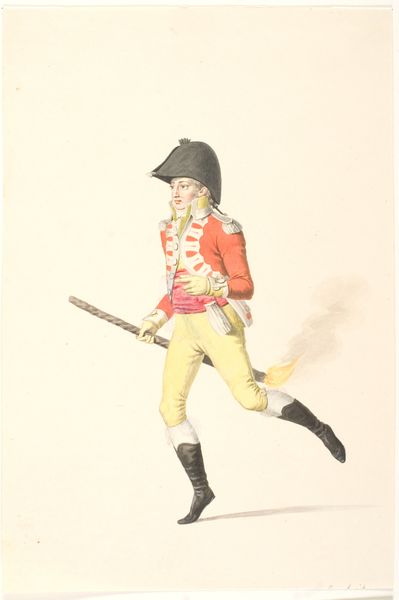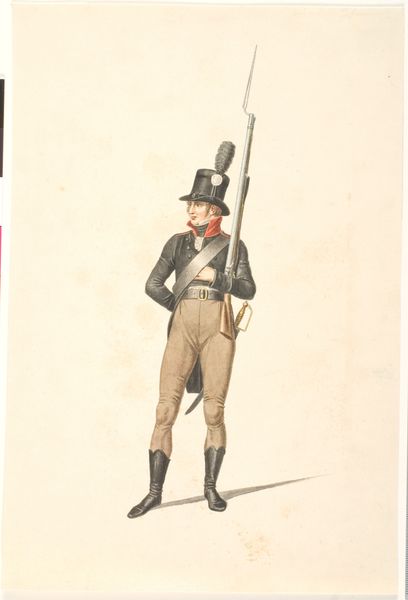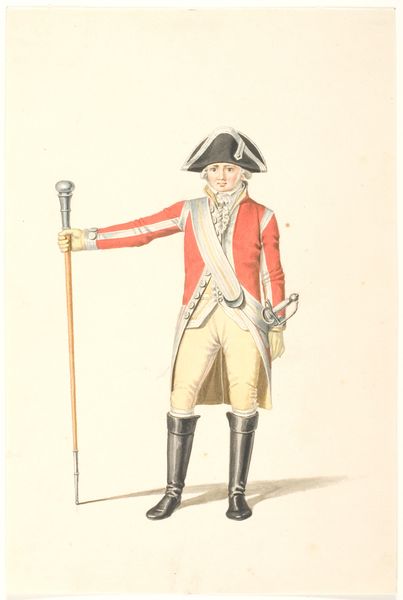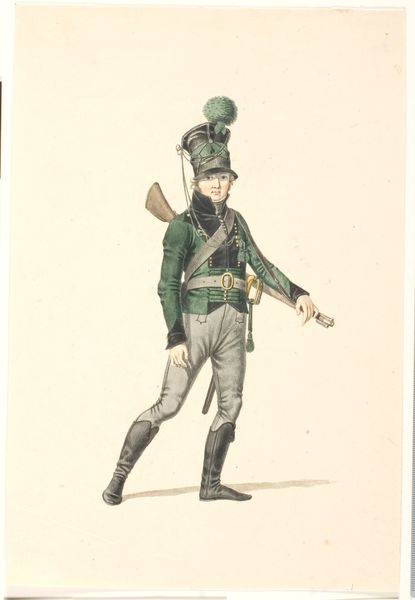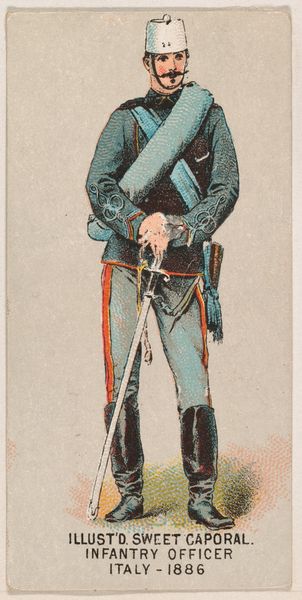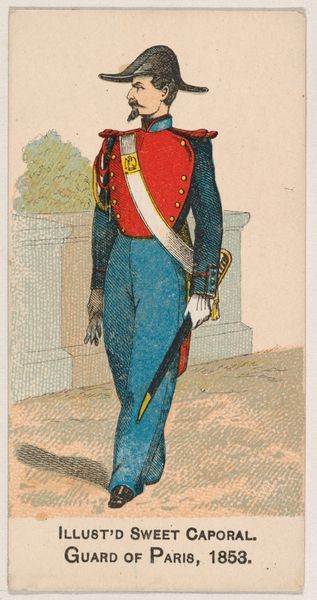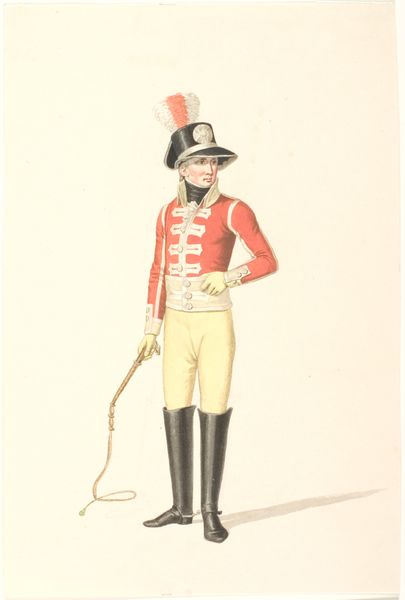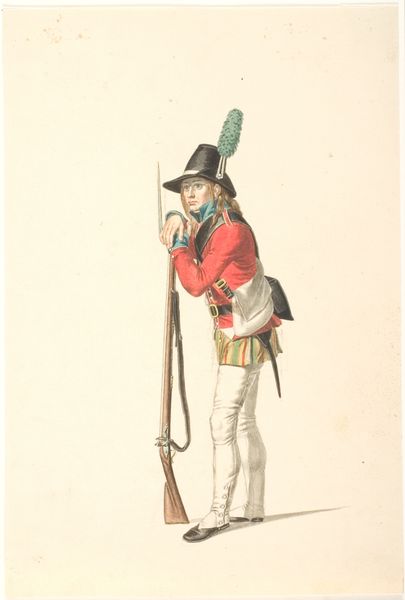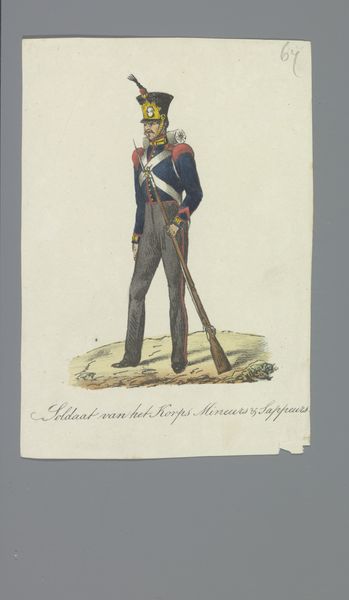
drawing
#
portrait
#
drawing
#
caricature
#
caricature
#
romanticism
Dimensions: 270 mm (height) x 180 mm (width) (bladmaal)
Curator: Johannes Senn’s “Søofficer,” dating from 1807, captures a Danish naval officer using a telescope. It's quite a striking character study executed in drawing. What are your immediate impressions? Editor: Well, I see the Empire waistline, the sharply tailored military jacket—that navy wool looks expensive—but something about his posture gives me pause. There’s a slight tension. Is he really looking out at the horizon, or posing? It feels almost theatrical. Curator: Senn clearly enjoys the swagger, doesn’t he? Look at the gold epaulettes and that somewhat absurd hat! There's an element of gentle ridicule—a subtle poking fun at the officer class perhaps? Senn uses caricature effectively. Editor: Caricature indeed. But where's the work that went into making those braids or saber embellishments—or sourcing the rare pigments? Who wove the fabric for that uniform? We're focusing on Senn's artistic flair, and forgetting labor. Curator: It's easy to overlook, isn’t it? Romanticism often presents an idealized vision, eclipsing the nuts and bolts—literally the cloth and seams. This officer sees himself as a hero; Senn’s pencil grants him that status, but there’s this lovely, subtle humor there too. Editor: And it sells the dream, doesn't it? The image of effortless authority, blind to the infrastructure and human power it relies on. It feels almost… deliberately naive, like romanticism turning a blind eye to material conditions. Curator: Maybe. Or maybe, in that telescope, Senn shows us the limitations of perspective. What *can* one really see, even with an instrument meant to sharpen vision? Senn prompts a look past appearances and asks, “What lies beyond the horizon of a naval officer’s ambitions?” Editor: Hmm, maybe you are right. Though, let’s not forget to acknowledge all the visible materials on view here, whether it is pigments on paper, or fabrics for an officer's status symbol. All are equal under production conditions. Curator: Well put. Ultimately, whether viewing it as a study of character or as an illustration of 19th-century class structures, “Søofficer” continues to be an artwork with both depth and many dimensions. Editor: Exactly. Every portrait has its context, doesn't it? We could all use a sharper eye.
Comments
No comments
Be the first to comment and join the conversation on the ultimate creative platform.
